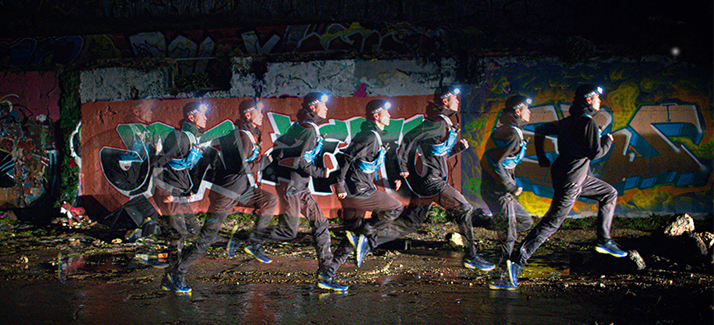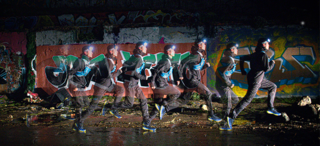Running is one of the simplest joys in life, but as the days get shorter or your schedule gets busier, you may find yourself lacing up in the dark. This is where a head torch becomes an absolute game-changer. It’s not just about seeing the path ahead—though that’s crucial—it’s about feeling confident and safe every step of the way. Imagine gliding through quiet streets or winding trails, your path illuminated and your presence unmistakable to others. A good head torch empowers you to train when it suits you, not just when the sun’s up. It’s your ticket to year-round consistency, letting you chase your goals regardless of daylight or weather. Plus, there’s something undeniably exhilarating about running under the stars, your breath visible in the crisp night air, and the world around you hushed except for the rhythmic sound of your feet. With the right head torch, the darkness isn’t a barrier—it’s an invitation
How to Choose the Right Head Torch for Running
Choosing a head torch isn’t just about picking the brightest one on the shelf. It’s about matching your gear to your running style, your usual routes, and your comfort preferences. Here’s how to make sense of the options:
Main Use: Where and How Will You Run?
Think about your typical run. Are you weaving through city streets, where ambient light is plentiful, or are you venturing onto remote trails where darkness is absolute? For city runners, a compact torch with moderate brightness will do the trick, ensuring you’re visible to traffic and can spot the odd pothole or kerb. Trail runners, on the other hand, need something more robust—a torch that throws a powerful beam far ahead and casts a wide pool of light at your feet, helping you negotiate roots, rocks, and sudden dips. If you’re training for ultras or planning long night runs, battery life and comfort become even more critical. The right torch should feel like a natural extension of your kit, not a distraction.
Light Output (Lumens) and Beam Pattern
Lumens are the headline figure, but don’t be seduced by big numbers alone. For most runners, 200–300 lumens is plenty for urban environments. If you’re heading off-road, especially on technical trails, you’ll appreciate the confidence boost of 500 lumens or more. But it’s not just about brightness—it’s also about how the light is delivered. A narrow spot beam is perfect for picking out the path ahead, while a flood beam spreads light more evenly, helping you see what’s right under your nose. Many modern head torches let you switch between these modes, adapting to your surroundings with a quick tap or press.
Activity Recommendations:
- Reading in your tent – 20 lumens (yellow light to help you relax)
- Hiking and Camping – 200 lumens
- Urban Running – 200 lumens
- Trail Running – 300 to 900 lumens
- Mountain Running – 500 to 900 lumens (white light to keep you alert)
- Cycling – 900 lumens+
Battery Type and Life
No one wants to be left in the dark halfway through a run. Rechargeable batteries are increasingly common and make a lot of sense—they’re eco-friendly, convenient, and save you money in the long run. Some torches offer hybrid systems, letting you swap in disposable batteries if you’re caught short, which is a real plus for ultra-distance events or multi-day adventures. Always check the manufacturer’s claimed battery life, but remember: real-world performance can vary, especially in cold weather. It’s smart to get into the habit of charging your torch after every run, just like you do with your phone or watch.
Fit, Comfort, and Stability
A head torch should be so comfortable you forget you’re wearing it. Look for adjustable, elasticated headbands that sit snugly without pinching. If you’re prone to picking up the pace or tackling rough ground, a top strap can make a big difference, stopping the torch from bouncing or slipping. Weight also matters, especially for longer runs—a lightweight design is less likely to cause discomfort or pressure points. Try on a few models if you can, and don’t be afraid to jog around the shop to check the fit14.
Water Resistance and Durability
British weather is famously unpredictable, so your head torch needs to stand up to rain, mud, and the odd accidental drop. Most running head torches are at least splashproof (IPX4), but if you’re a year-round runner or love a good downpour, look for higher ratings like IPX6 or IP68. These models will shrug off heavy rain, puddle splashes, and even the occasional dunking.
Key Features to Look For
Brithtness Modes → Modern head torches come with multiple brightness settings, so you can tailor the output to your needs. Use the high setting for technical sections or when you need to see far ahead, medium for general running, and low for walking or emergencies. Some models even include a red light mode, which is handy for preserving your night vision or reading maps without dazzling your mates.
Beam distance → Beam distance is how far the torch can throw light on its highest setting. For trail running, look for at least 50–100 metres—this gives you plenty of warning for upcoming obstacles and helps you plan your route. In urban settings, a shorter beam is usually fine, as there’s often some ambient light to help out.
Battery Indicator → A battery level indicator is a small feature that makes a big difference. It lets you know at a glance how much juice you’ve got left, so you can recharge or swap batteries before you’re caught out. Some torches even have a warning light that flashes when the battery is running low.
Lock Function → Ever pulled your torch out of your bag only to find it’s been on the whole time? A lock function solves this problem, preventing accidental activation and saving your battery for when you really need it.
Weatherproofing → British weather can throw anything at you, from drizzle to downpours. Look for a torch with at least IPX4 water resistance, but if you’re a year-round runner or love a challenge, go for IPX6 or IP68 for total peace of mind. These models will keep shining even in the worst conditions
The perfect head torch is the one that fits your needs, your budget, and your running style. For most runners, a lightweight, rechargeable model with at least 300 lumens, adjustable beam modes, and a comfortable fit will cover all the bases. Trail runners and ultra-distance enthusiasts might want to invest in something with a bit more power and battery life. Remember, a good head torch isn’t just about seeing—it’s about running with confidence, whatever the time or weather. With the right torch, the night is yours to explore.
FAQs
The sweet spot for most runners is 200–300 lumens—bright enough for city streets, parks, and canal paths. If you’re regularly heading off-road or tackling technical terrain, bumping up to 400–600 lumens gives you extra confidence, especially on uneven ground or in pitch-dark conditions. Remember, more isn’t always better—too much light can flatten shadows and make it harder to judge depth, so choose a torch with adjustable settings and experiment to find what works for you.
Battery life is all about matching your torch to your running habits. For most runners, 2–4 hours on high power is more than enough for a typical session. If you’re training for ultras, night races, or long winter adventures, look for models that offer 8+ hours on lower settings, or those that let you swap batteries on the go. Always check the run-time for each brightness mode, as using the highest setting will drain the battery much faster.
Rechargeable head torches have become the norm, and for good reason—they’re cheaper to run, better for the planet, and often more powerful. That said, hybrid models that accept both rechargeable and disposable batteries are a smart choice if you’re heading somewhere remote or want extra peace of mind for longer outings. It’s all about flexibility and making sure you’re never left in the dark.
Absolutely. Most running head torches are designed to handle rain and splashes, but if you’re regularly out in wet conditions, look for a model with a higher waterproof rating (IPX6 or IP68). That way, you can keep running whatever the weather throws at you.
Comfort is subjective, but lightweight models with soft, adjustable headbands and a secure fit tend to win out. If you have a smaller head or prefer a minimal feel, look for models designed with women or youth in mind, or those with extra padding and a top strap for added stability. The best torch is the one you barely notice once you start moving.
You can, but it’s not always ideal. Hiking and camping torches are often heavier, bulkier, and designed for slower-paced activities. Running-specific torches are built to stay put, wick away sweat, and provide the right balance of brightness and battery life for faster movement. If you already own a hiking torch, give it a try—but if you’re running regularly, investing in a purpose-built model is well worth it.
A spot beam throws light far ahead, helping you see what’s coming up on the path or trail. A flood beam spreads light more widely, illuminating your immediate surroundings and making it easier to spot trip hazards underfoot. Many of the best running head torches let you switch between these modes or blend them, so you get the best of both worlds.
After each run, give your head torch a quick wipe down with a damp cloth, especially if you’ve been sweating or running in muddy conditions. Rechargeable batteries should be topped up regularly, and it’s a good idea to check the charging ports for dirt or moisture. Store your torch in a dry place and avoid leaving it in direct sunlight or extreme cold for long periods.
A snug, adjustable fit is key. Look for models with a top strap or extra-grippy bands, and make sure the torch sits securely on your head. Lightweight designs are less likely to bounce, especially if you pick up the pace or hit uneven ground.
For ultras, you want a torch with long battery life, a comfortable fit, and enough brightness for technical terrain. Models like the Black Diamond Distance 1500 or Petzl Swift RL are favourites among ultra runners for their reliability and performance.
Related Articles







